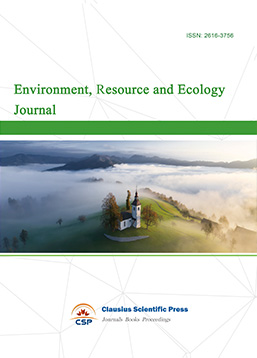Simulation of rural residential energy consumption in different climate zones based on Dest-H
DOI: 10.23977/envcp.2024.030103 | Downloads: 23 | Views: 1716
Author(s)
Yucan Zhou 1
Affiliation(s)
1 School of Environmental and Municipal Engineering, Lanzhou Jiaotong University, Lanzhou, 730070, China
Corresponding Author
Yucan ZhouABSTRACT
The number of rural housing construction in our country is increasing daily. With the appeal of energy-saving renovations in rural housing, improving the rural living environment has become a problem that can not be ignored. In this paper, the Dest-H energy simulation software was used to simulate the cooling and heating loads of a rural residential building in different climatic regions of our country under different absorption rates of the external surface. The results show that the total air conditioning load can be reduced by increasing the absorption rate of the enclosure appropriately in the cold and cold areas. For the areas with hot summer and cold winter, hot summer and warm winter, and mild areas, reducing the sunlight absorption rate of the external protective structure can reduce the total air conditioning load of the year. With the absorption rate of the outer sheath, the natural room temperature also gradually increased.
KEYWORDS
Dest-H, Building Energy Consumption, Absorption Rate, Air Conditioning Load, Envelope StructureCITE THIS PAPER
Yucan Zhou, Simulation of rural residential energy consumption in different climate zones based on Dest-H. Environment and Climate Protection (2024) Vol. 3: 17-26. DOI: http://dx.doi.org/10.23977/envcp.2024.030103.
REFERENCES
[1] Qu Suiling, Xie Zihong. Exploring how to achieve energy saving, emission reduction, and environmental protection goals through Architectural design [J]. Footwear Technology and Design, 2023, 3(23): 145-147.
[2] Chen Y. Current situation of energy consumption and analysis of energy-saving tasks in rural buildings in China. Modern Agricultural Science and Technology, 2011, (22): 275+277.
[3] Hu T , Yoshino H , Jiang Z ,et al.G-2 Questionnaire Survey on Residential Indoor Environment and Energy Consumption in Different Climate Zones in China[J].Techinical Papers of Annual Meeting the Society of Heating,Air-conditioning and Sanitary Engineers of Japan, 2010.DOI:10.18948/shasetaikai.2010.1.0_505.
[4] Xu B. Building Energy software development and optimization of radiation characteristics of building envelope [D]. University of Science and Technology of China, 2012.
[5] JGJ 26-2010, Design Standard for Energy Efficiency of Residential Buildings in Cold and Cold Areas [S].
[6] GB 50736-2012, Code for Design of Heating, Ventilation and Air Conditioning for Civil Buildings [S].
[7] Chen Z , Bai L , Li F .Simulation of residential energy consumption based on software of DeST[C]//International Conference on Renewable Energy and Environmental Technology.2014.
| Downloads: | 684 |
|---|---|
| Visits: | 41319 |
Sponsors, Associates, and Links
-
International Journal of Geological Resources and Geological Engineering

-
Big Geospatial Data and Data Science

-
Solid Earth and Space Physics

-
Journal of Cartography and Geographic Information Systems

-
Environment, Resource and Ecology Journal

-
Offshore and Polar Engineering

-
Physical and Human Geography

-
Journal of Atmospheric Physics and Atmospheric Environment

-
Trends in Meteorology

-
Journal of Coastal Engineering Research

-
Focus on Plant Protection

-
Toxicology and Health of Environment

-
Geoscience and Remote Sensing

-
Advances in Physical Oceanography

-
Biology, Chemistry, and Geology in Marine

-
Water-Soil, Biological Environment and Energy

-
Geodesy and Geophysics

-
Journal of Structural and Quaternary Geology

-
Journal of Sedimentary Geology

-
International Journal of Polar Social Research and Review


 Download as PDF
Download as PDF